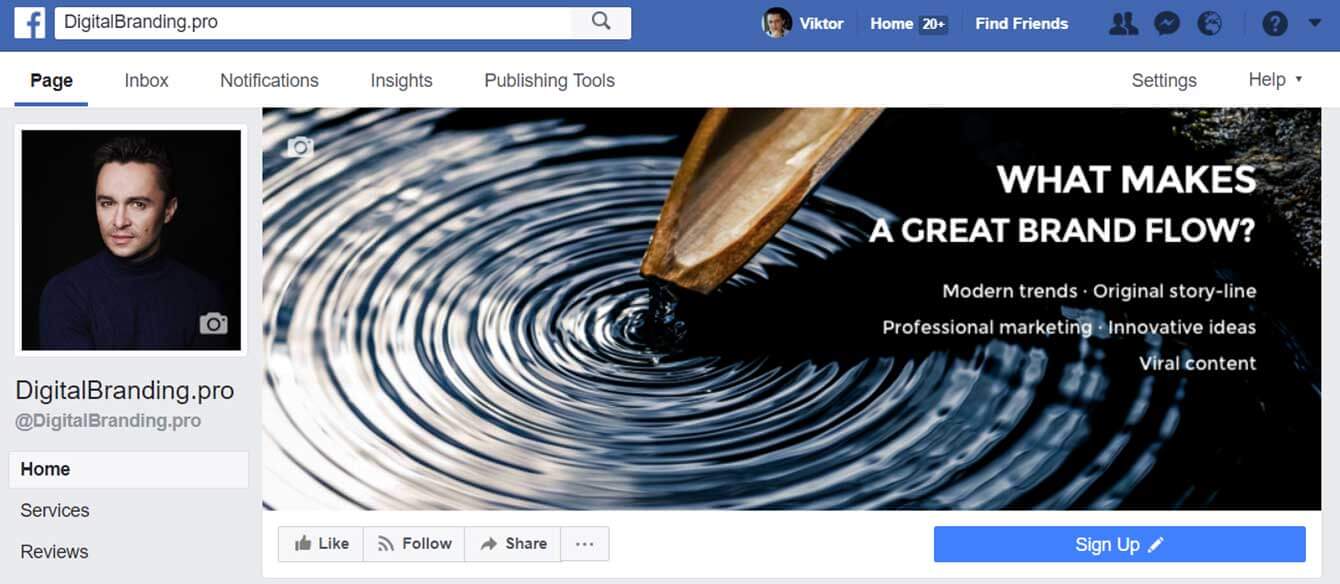There are times when you need to stop talking and start paying attention to what your audience says. They call it managing your brand reputation online.
People Are Talking. About You
In fact, right at this very moment, there might be a couple guys out there talking about your brand. Whether they are talking sh*t or kind words, largely depends on how you present, maintain and manage your brand online.
The Internet of the 2010s is rather different from what it used to be in the early 2000s. Mesmerized by the newly opened possibilities, the companies would go out of their way to sell products and services online pioneering more and more methods of digital marketing.
The customers, in their own right, wouldn’t mind as the Internet was still considered a “new thing”, something that is out there but not quite as good as retail, physical shops. Like a younger brother.
Gen Z – A New Generation of Consumers
However, a decade had passed, and a new generation of consumers emerged – the so-called Generation Z: people who were born in the late 90s to early 2000s. These people grew up with the notion of the Internet being something integral, something that has always been and always will.
For these people, retail offline trade is somewhat inferior to the Internet – a worthy second option only to be used if the primary option hasn’t been sufficient. Therefore, they spend more time on the Internet than any other age group – not only shopping but also communicating with other people/consumers and voicing their own opinions about the experiences they have had quite freely.

The Internet in general and social networks, in particular, have given people the freedom to speak about pretty much anything and connect with millions of people online in mere seconds.
On one hand, it’s a great opportunity for businesses to reach out to their target audiences. On the other hand, it’s a great responsibility as your business is open to millions of eyes and ears. That leaves almost no room for failure and makes businesses care about the way their brand is presented online more than ever.
This is when you need to consider managing brand reputation.
What Is Online Reputation Management?
To put it simply, online reputation management (ORM in short) is the process of proactively influencing the reputation of a brand, company, or an individual on the Internet and social networks.
There isn’t a single brand reputation “indicator” or activity that you could use for measuring and maintaining your brand reputation online. ORM is more of an ongoing process, like pedaling a bike – once you stop doing it, you are bound to fall.
Why Is It So Important to Manage Your Brand Reputation?
Because a good reputation can lead to the success for your brand and company while as poorly managed reputation can seriously contribute to their demise.

Things like online reviews, social network posts, and aggregator websites have become so influential that it’s simply irresponsible now not to include them in your business strategy.
Besides, you’ll soon learn that managing a brand reputation isn’t all that difficult – you just have to be very consistent and patient.
The Ultimate Checklist to Managing Your Brand Reputation Online
Be sure to check out on each of these points if you want your brand to shine on the Internet, be well-known and respected.
1. Make sure that all of your social network pages are verified!
No matter how obvious it may sound, there are some businesses out there that don’t even bother to verify their official social network pages.
When dealing with customers, you want to represent your brand officially so that none of your customers and/or business partners would ever question the authority and authenticity of your social media page.
2. Do a simple Google search for your brand/company name
Before we go on to talk about specialized tools for that, be sure to Google your brand name once in a while just to make sure a nasty 1-star review doesn’t pop up in the top results.
If it did happen, proceed to paragraph 6 straight away to learn how to handle negative customer reviews and feedback in general.
3. Maintain all your social media accounts active!
There’s nothing more discouraging for a customer than a company’s social media page that is updated once in a few months. You want as many people as possible to join your brand page on Facebook, Instagram, Twitter, or elsewhere.
But have you given them a strong enough reason to stay and follow you? Well, you’d better have!

Work out a posting schedule for each of your social media accounts, develop a content plan, and stick to those no matter what.
There are no strict recommendations as per how frequent your posts should be – experiment with it. Start with a post per day and then see if you could get more attention from users by increasing the frequency of your posts to 3-5 a day.
Doing too many posts per day brings another problem though – lack of ideas for the new content plan. You don’t want spend half a day searching for funny pictures on the web instead of solving some more pressing business tasks.
4. Do a proper SEO for your official website
You don’t want anyone else to appear on the top spot on the search engine results page (SERP) other than you.
To achieve that, optimize your website for the most relevant keywords – whether you do it yourself (and there’s a checklist for that as well on my blog «On-page SEO Checklist: How to Build a Perfectly Optimized Website Page») or you order your SEO from professionals, it has to be done.
Makes perfect sense for a random customer – you type a brand name into the search box and – boom! – there it goes on the top of the SERP.
5. Your personal profile affects your business reputation
People build stronger connections with people rather than companies – you as a business owner should represent and embody your company in the same capacity as your brand does.

That means keeping your public profile aligned with your business ethics and nature. Of course, you should behave yourself not only online but offline as well – however, that is not up to me to judge you.
Still, seeing the owner of a vegetarian food store posting pictures from barbecue parties is quite… disappointing.
Do share your passion and enthusiasm for what you do on both business and personal pages – people will surely pick up on it.
6. Deal with negative feedback ASAP
The main rule you should remember once and for all is that YOU DON’T STOOP DOWN TO DIRECTLY INSULTING PEOPLE ONLINE IN RETURN FOR THEIR NEGATIVE COMMENTS ON YOUR BRAND.
So many businesses have done that mistake before – don’t be like them.
First of all, all people are entitled to their opinion. Second, the reason for their frustration might not even be your brand (bad mood, personal problems, the need to take it out on somebody). Finally, negative feedback is not the cause – it’s the effect.
The cause, however, may be within your company – poor customer service, product quality, slow website, frustrating navigation, inappropriate ads, etc. So, start improving the world from yourself.
How to deal with the negative feedback then? First, you need to realize what kind of person you’re dealing with:
- a reasonably frustrated customer that provides valid argumentation and has a point
- a rare case of an online troll who is out there to make other people’s lives miserable
If this is the first type, then you should acknowledge your mistake (if there has been such) or explain your position to avoid misunderstanding. Offer a customer something in return – a refund, a discount, a free gift, or an apology for God’s sake!
If this is type 2, then the best thing you could do is walk away and never engage into any communication with that person – it’s only going to get worse. You won’t prove anything.
If the comments are too personal of defamatory or endanger your business reputation, you should file a police report on that person.
7. Use brand mention tracking tools
There are companies who offer quite nifty tools for tracking your business mentions online – it would be a shame for you no to use them.
Here are some of the best ones out there:
Conclusion
I hope you took away some interesting thoughts and ideas from the article.
If you want more interesting articles on digital branding and Internet marketing, be sure to check these first:





Comments0